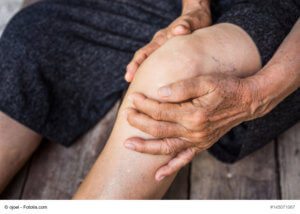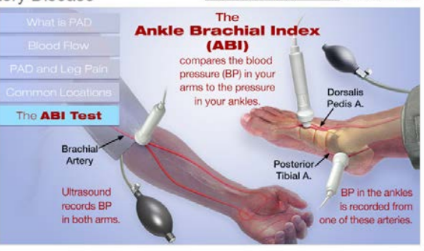There's a brand new way to address PAD: stretching! Remember when you thought cardiovascular exercise like walking was the only way to help your Peripheral Arterial Disease (PAD)? Well, a new study from the University of Milan is turning that idea on its head. Researchers revealed that 12 weeks of passive stretching can also improve your blood flow and support your vascular health. This could drastically alter exercise recommendations for PAD patients.
PAD is a painful condition triggered by narrow, hardened arteries. When you feel PAD pain in your legs, it’s because reduced blood flow to your legs means they don’t receive enough oxygen to support your movement.
Typically, vein specialists recommend a walking program to help boost blood flow to your legs. Even though the walking will hurt at first, over time, most PAD patients see symptom improvement. Especially when they walk in combination with other PAD treatment protocols.
For some, however, that initial pain is overwhelming. Which is why this new Italian research is very ing exciting.

Before turning to the research findings, a word on stretching. There are three types: dynamic stretching, which involves loosening your body while you’re on the move. Think gentle walking lunges, arm twists and leg swings. Dynamic stretching is a great warm up for active workouts like jogs and runs.
Next comes active stretching, where you get into a stretched position, such as lifting your leg in the air in front of you. And then you hold that position without the assistance of your hands, or anything else. Associated with workouts like yoga flows, these stretches increase your flexibility and build muscle. But they’re not the type of stretch we’re talking about today.
The stretching format included in our study is passive stretching. It involves assuming a stretch position and holding your body in that pose with the help of your hands or another external force, like a yoga strap. Now, apparently, we know that passive stretching can improve your blood flow. Let’s take a closer look.
To start, researchers gathered 39 healthy men and women, splitting then them into two groups. One group engaged in leg stretches five times a week for 12 weeks. The second group didn’t stretch.
At the end of the study period, the stretching group showed evidence improved vascular health. heart attack and stroke. The study authors wrote: “Blood pressure was decreased, central and peripheral arterial stiffness was reduced, and vascular function was increased after 12 weeks of passive stretching training.”
In other words, regular passive stretching minimized factors that contribute to PAD. All of which suggests that, in addition to walking and other forms of cardio, you may want to discuss a stretching program with your vein specialist.
Now, it’s important to note that stretching doesn’t produce the same level of blood flow improvement as cardiovascular exercise. But for those who can’t walk, or who are able to combine stretching and walking programs, the findings show a lot of promise.
As we noted earlier, stiff, hard arteries contribute to PAD symptoms. So, keeping your arteries healthy can help prevent this condition. But how can you protect your arterial health?
You need to maintain their flexibility, since they must expand and contract in order to allow for proper blood flow. And, to keep your arteries flexible, you should maintain a healthy weight, engage in cardio exercise and address high blood pressure if that’s a personal concern. Also, if you're a smoker, now is the time to quit. Or, if you have an underlying condition such as diabetes, be sure to maintain good disease control to further reduce your risk.
If, however, you’ve already developed plaque and atherosclerosis, it’s time to explore PAD treatment. At our Houston and Dallas area arterial care clinics, we treat PAD with minimally invasive procedures such as Angioplasty, Stenting, and Atherectomy. In most cases, we’re able to resolve your symptoms without large incisions or open surgery, so we’re typically able to send you home the same day as your procedure. 
But what does that procedure look like? One of our expert interventional radiologists inserts a small IV and wire through your groin. Once we access your blood vessel, we use imaging to guide the wire into position past your affected artery. From here, we’ll determine the best treatment option based on your disease progression. We’ll either use a balloon to widen your vessel (angioplasty) or carefully place a stent that will hold the vessel open permanently to increase blood flow.
If you have PAD symptoms such as pain when you walk, numb or cold feet, reduced leg hair or toenail growth, or wounds that just won’t heal, it’s time to come in for a visit. Click here to request an appointmentClick here to request an appointmentClick here to request an appointment and we’ll get you scheduled for an Ankle-Brachial Index test. The results will quickly determine the extent of your PAD progression.

Scheduling
Please contact our dedicated specialists to schedule a consultation today.
2024 Texas Endovascular. All rights reserved. Website Design by Healthcare Success